
Written by Kathleen Goodwin
On the First Friday of every month in Missoula, the community gathers on the streets, museums, and open spaces of town to celebrate art. Whether it is in the heat of summer or the coldest depths of winter, it doesn’t seem to matter. There is always a crowd gathering around paintings or sculptures, enjoying live music, and talking about the arts. Surrounded by incredible nature, it is no real surprise that Missoulians enjoy a large dose of inspiration, which makes this place an incredibly diverse and rich arts town. At the core of the arts movement is the Missoula Art Museum (or MAM, as it is known around town), a free public museum that has been around since 1974. MAM is more than an art museum—it is a center for free expression and a staple in the community. Brandon Reintjes, the senior curator for MAM, sat down with Destination Missoula to discuss the museum, the Art Park, and the significant role the arts play in Missoula’s community and identity.

Free expression, free admission is a foundational pillar of the Missoula Art Museum.
For years, Missoula did not have an art museum, but art was always a part of the community, and it was this passion for art which grew what we now know of as the Missoula Art Museum. “The Carnegie Library was founded in 1903 and it served as the public library for years until the 1970s when a new one was built, and the building stood empty. There were some questions as to what was going to happen to it. In the intervening years there was a Festival of the Arts and there were a few pop-up shows [in the space], and some of them were really wild and experimental. It was a ground swell of Missoula citizen support that made MAM happen. The fundraising from the festival and the pop-up shows that had been happening independently in the space made [the old library] an obvious choice for an art museum; and so in 1974 MAM was founded.”
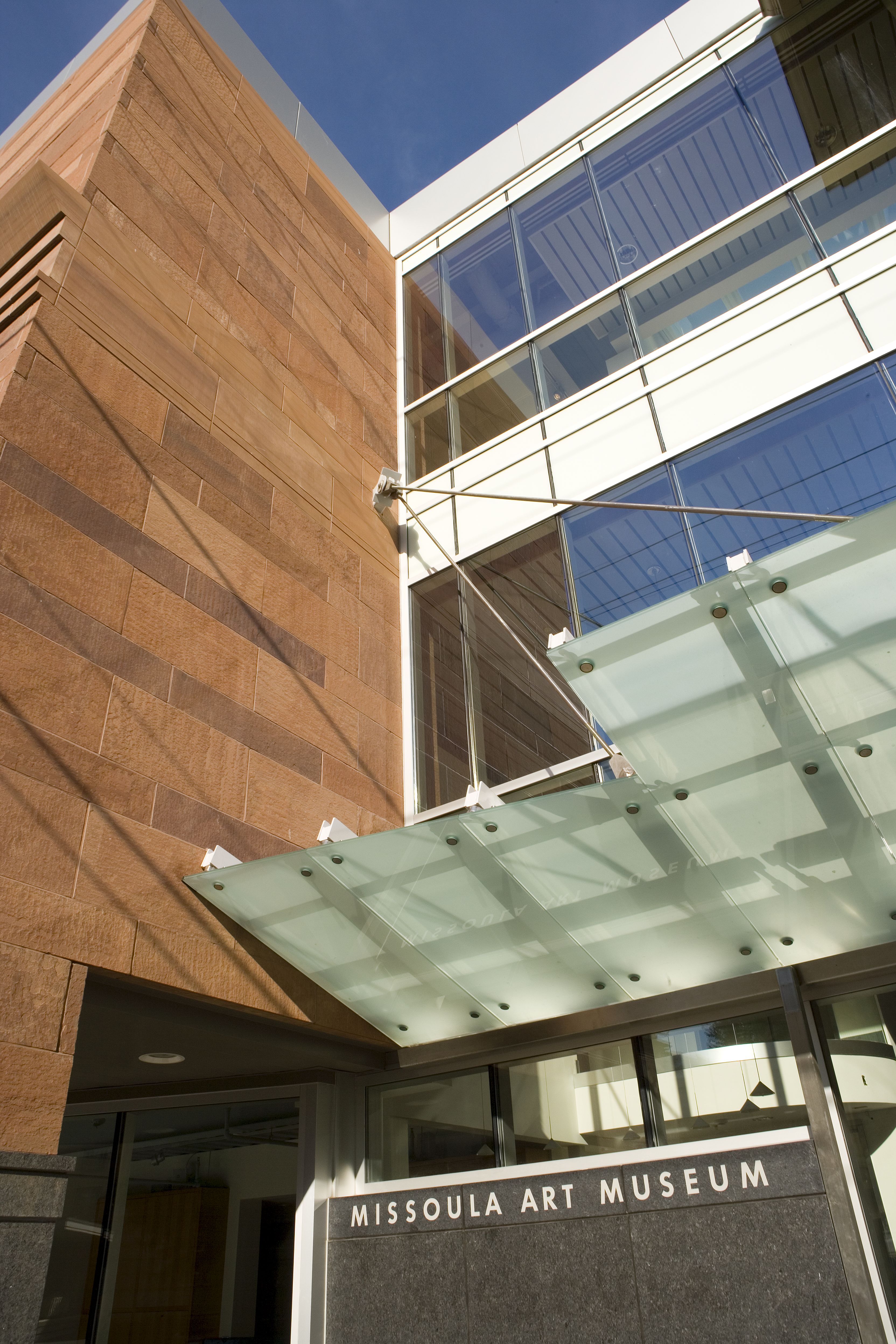
Photo courtesy of Missoula Art Museum.
MAM’s founding principles center around access to art for all. The people at MAM believe that access to art is a right, not a privilege. For this reason, MAM has always been—and remains to this day—admission free. The original Carnegie Library building has been the home to MAM for years. The building is lovely: old brick with a dramatic staircase on the exterior with columns and character to boot. But as the museum grew and modernized, issues of accessibility were raised, as well as conversations about a storage space for the museum’s permanent collection. In 2005, the decision was made to expand the museum.
“They retained the original historic character of the library. From 2005-2006, the glass and steel side was installed. The vault comes out underneath the sidewalk and there is an elevator that brings people to all the floors, which makes the museum accessible.”
When you enter the front doors of the Missoula Art Museum, a contemporary, chic interior greets you, as do volunteers. Since MAM is admission free, many of the people you meet at the museum are working not for money, but for the love of art and for the continuation of the mission of the museum. There are 12 people on staff at MAM, and over 150 volunteers. The Missoula Art Museum is the leading contemporary art museum in the West, and the carefully and purposefully curated exhibits provide a living witness to the culture, history, attitudes, and relations of our time. Brandon Reintjes explains how the artwork is selected to create an experience rather than just a display.

MAM’s Carnegie Gallery, featuring the exhibition, Harold Schlotzhauer: Living in a Good Dream, on view through February 9, 2019.
“MAM is a regional contemporary museum, so we keep that in the forefront of our minds. We rotate the exhibitions every 3 to 4 months, and there are 5 or 6 exhibition spaces [at a time]. We typically look for work that fits with our programming. We are artist driven, so we look for special artist programs. We try to focus on contemporary native art as well as Montana modernism. So we look at all these different factors and try to find something that is exciting and fits our mission. The renovation was really an opportunity to look at how the museum was performing and make adjustments. One of the most important distinctions that came about at that time was our commitment for the top floor to be dedicated to contemporary American Indian art, which had been a collection focus but not an exhibition focus,” he explains. That focus started in the 1990s and has continued to the present day, making MAM one of the only museums in the American West with such a dedication to Native artwork.
When you look at any given exhibit in MAM, you are looking at something nearly three to five years in the making.
“We certainly like to see artists pushing their boundaries. We typically only do an exhibition with an artist once in their lifetime, or once every 10 years, so it has to be the right exhibition at the right time. We might wait on an artist. We might think, Wow, that’s a really great project, but we are going to hold off at this time and wait to see what the right space is in the building or what the appropriate scale is for the project. There are a lot of factors. It is a matter of constant shuffling and pushing each project forward as the time gets closer. We advance a project, and then retreat and work on current projects and move projects along, always making sure they are the right space and checking with artists and nurturing those projects, either with attention like studio visits or sometimes financially. MAM is currently scheduling for 2020, but Brandon explains that they also have some significant projects lined up for 2021 and 2022 and that while they are not actively setting perimeters, he does know generally what will be on display in MAM during the summer of 2022.
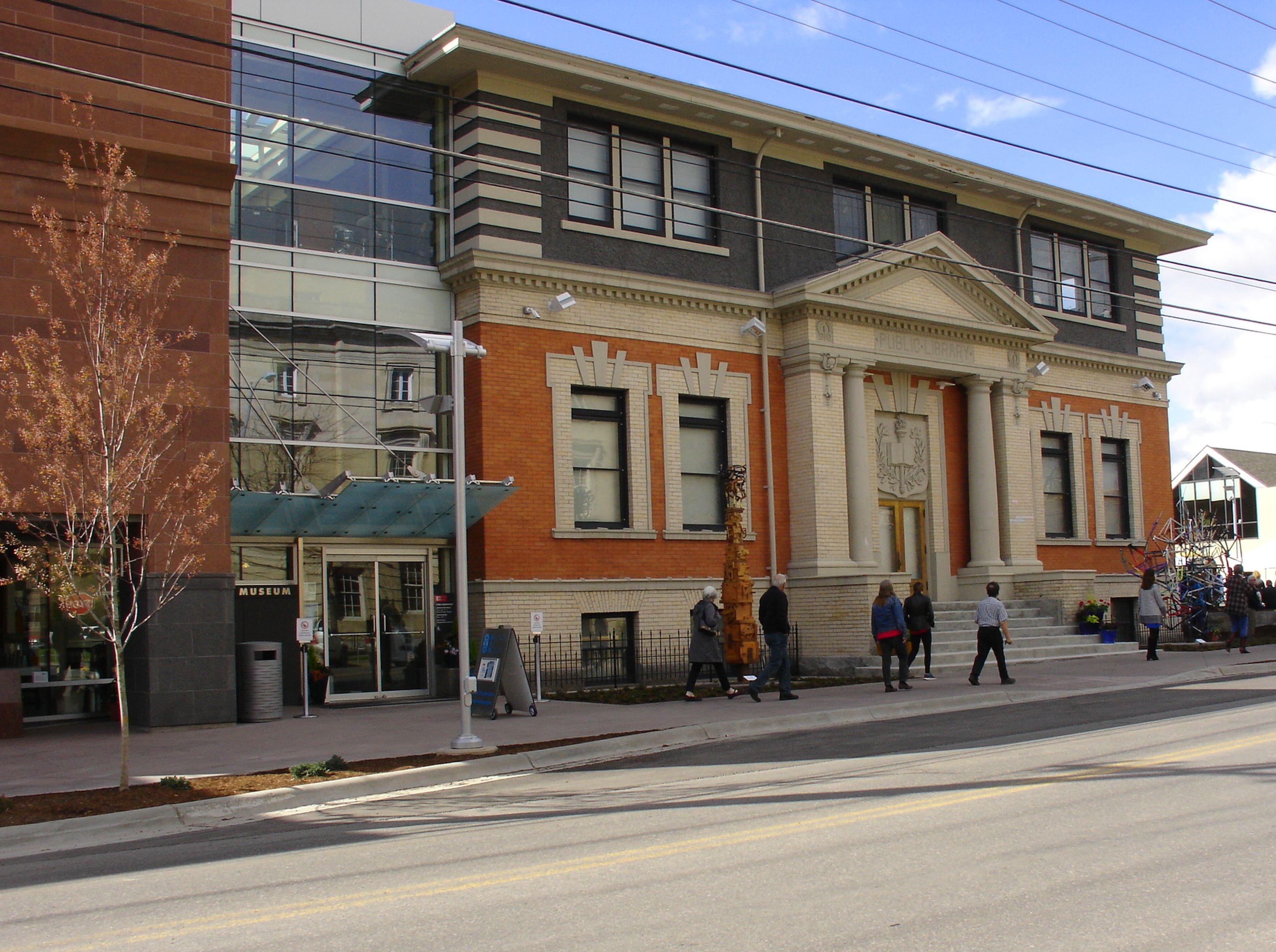
Photo courtesy of Missoula Art Museum.
MAM’s art spaces extend beyond the borders of the museum’s walls. After the renovation came the formation of the Art Park, an outdoor, collaborative space that serves as an additional exhibition space for large scale outdoor sculptures. Brandon and I stood outside in the art park as he explained the significance of this small but mighty space.
“Before [the expansion], this was just a sad-looking piece of lawn. The street was wider. We were able to push the park on both sides of the roads and redesign the landscaping. One of the things we like about this is when you see it from the main street of Higgins or come in from that perspective, suddenly you see these art pieces that announce that this is a contemporary art museum whereas before, you just saw a brick building. This immediately communicates the mission of the museum. We do seasonal annual shows here, from May to October, and we let it go dormant in the winter time. We do try to think about this as another gallery space.”

Phoebe Knapp gave a tour of her sculptures in May 2018 to students from Frenchtown Elementary School. Photo courtesy of Missoula Art Museum.
The Art Park is a partnership between the City of Missoula, Adventure Cycling (located across the street from the museum) and MAM, and it’s first exhibition was featured in 2017.
“To honor the relationship [between MAM and Adventure Cycling], our inaugural exhibition was a bike exhibit called By the Bike. We invited 6 different artists to create 5 different sculptures. We had sculptures in the lobby, creating an interior/exterior relationship. It was a great exhibition. This year, we invited Billings artist Phoebe Knapp, and the intent this time was to cross the street and to use the plaza on Adventure Cycling’s side to unify the art park for our second exhibition.
That Art Park is simple, but strikingly beautiful and purposeful. Every rock is precisely placed, the plants all intentional, and the art appears as if out of the sidewalk. It is a perfect synecdoche for MAM as a whole—contemporary artwork existing in the natural world.
“We were trying to think about what some smart, sustainable, and ecological landscaping would be, but also creating the appropriate sites for art. We worked with Caras Nursery for the selection of plants and with SPVV Landscape Architects out of Spokane. We put anchors in, and the pad that the art sits on is thicker and also has a grid of rebar, making it reinforced to protect the sidewalk. We can put down pieces that are several thousand pounds if we need to and toggle and anchor them. Another big part of the Art Park was inviting the community in by creating a plaza and an open space. The benches get a lot of use. We wanted to make a humane environment, and the addition of the Portland Loo on the north end to add a public restroom was one of the important points of discussion as we were working with the city. Adventure Cycling has visitors from all over the world, so I love that we are welcoming these visitors to Missoula with the drinking fountain and tables and a place to lock and park their bikes and artwork, which is one of the first things they see when they come to Montana.”
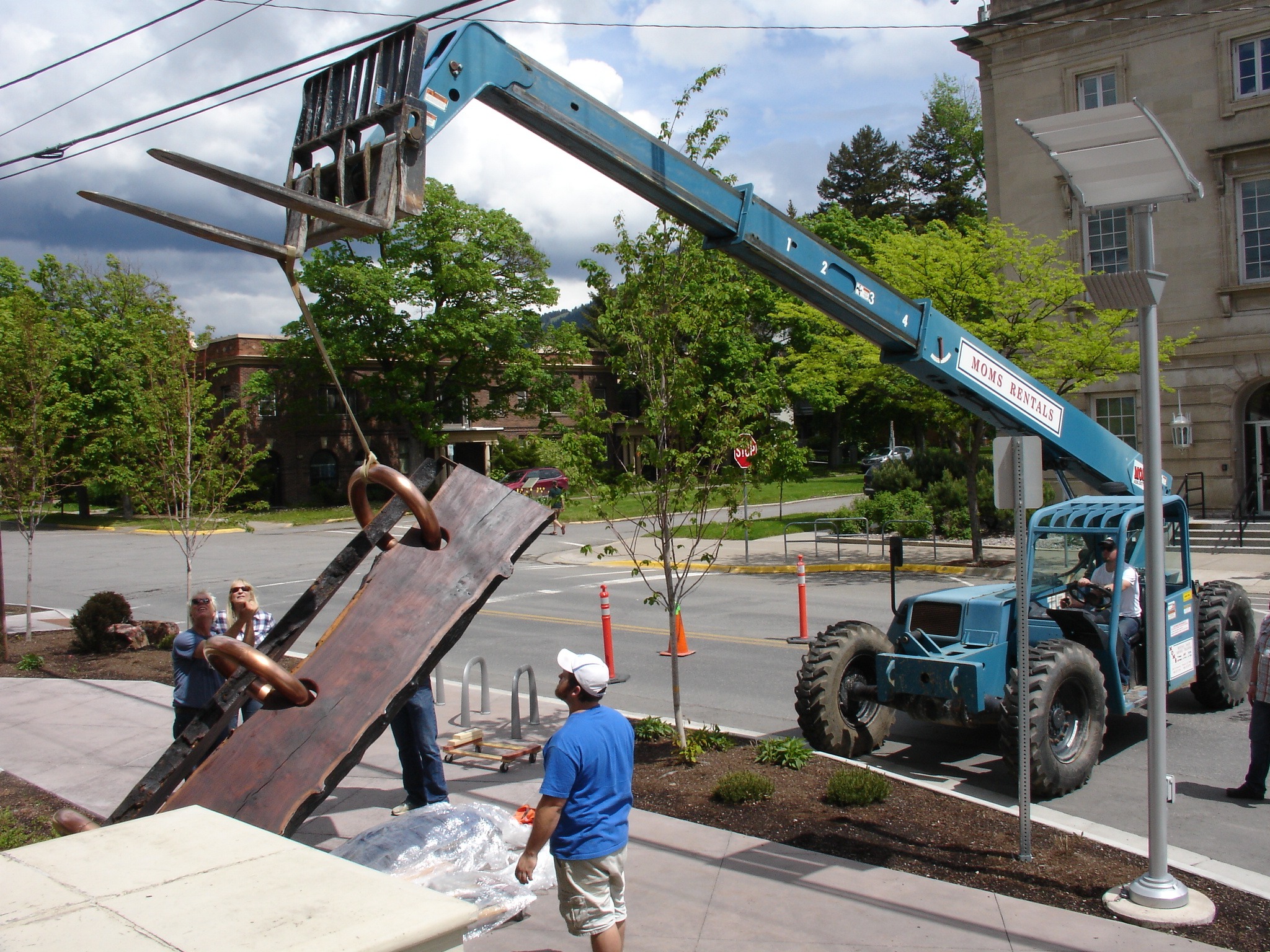
Installation in the Art Park May 2018 of Phoebe Knapp’s Tablet, 2004, walnut, metal, copper-coated iron pipe.
Surrounded by mountains with the bright blue sky above me and the sun warming my skin, I could see why this space was so important to the mission of MAM. It took 15 minutes and a little bit of people watching to see how it was significant to the community as well. As people walked by, I noticed that nearly every other person engaged with the art in some way. Maybe it was a quick side glance. Maybe they stopped and read the informational signs. Maybe they touched the sculptures, or sat on the bench and observed in the more traditional museum way. The sculptures are located in the middle of the sidewalk, meaning that regardless of whether passerbys choose to intentionally engage, they are interacting with the art all the same.
“When we put the pieces up, we put them smack dab in the middle of sidewalk with enough room that you can wheel through or walk through and negotiate that space or come around it, but part of the reason we wanted to place them here is so you had to engage with them somehow. You have to move around them or pass through them. As soon we installed them, we had this gentleman come through who walked in and walked between them and he stopped and he reoriented with these cardinal points. And then he backed up and walked back in, and it was something about being in the midst of these four pieces of bronze, he was having some sort of powerful interaction. This has been a really important gathering space for Missoula, some formal or informal events. Some music events have happened here on First Friday. It’s really quite incredible to see the power and the impact of public art and public spaces and how it has extended our footprint and our extension to the community more visceral. It’s like, ‘Here we are in the center of the universe where art happens.’”
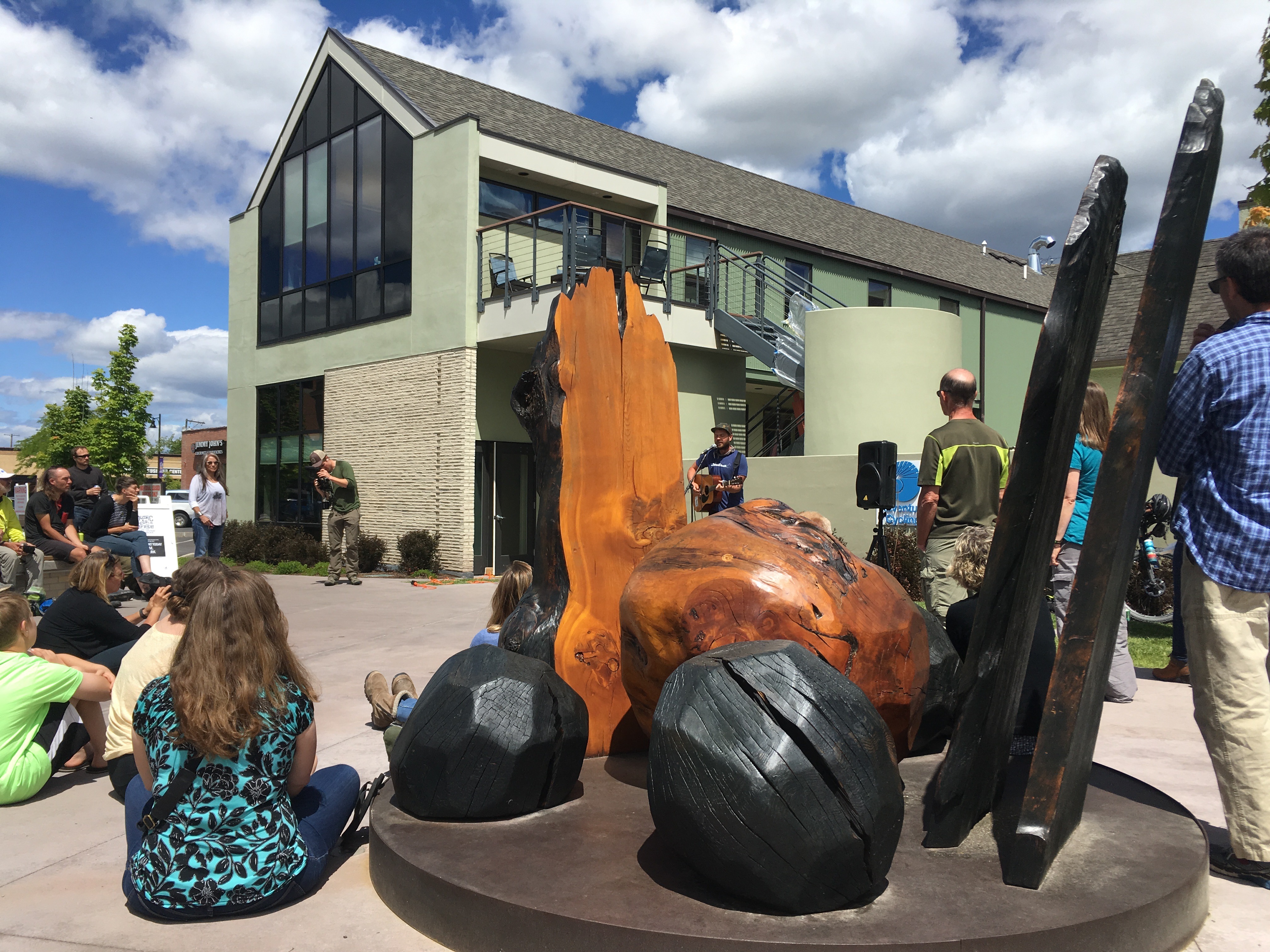
Adventure Cycling celebrated the 20th Anniversary of the Great Divide Mountain Bike Route (GDMBR) on June 14 with a free concert by Ben Weaver in the Art Park amid Phoebe Knapp’s sculpture, The Light Within. Photo courtesy of Missoula Art Museum.
The art park allows art to be approachable to everyone. It is peculiar in our society how art is so important yet, at times, can be so unapproachable. There is something intimidating about walking into a museum, paying for your admission, and then being overwhelmed by four floors of art pieces, each one with a lifetime embedded inside, with the expectation to “get something” out of the experience on your shoulders. On the other hand, there is something so incredibly opening about that exact same experience for those who feel confident with their ability to engage with artwork. MAM strives to make art approachable in several ways, with the focus on education and expression.
“There are all sorts of barriers that people overcome to come into the museum for the first time. I think the Art Park is an invitation for people to interact with art in a low stakes environment. You can come and look and think about the art and have an encounter or an artistic interaction with these public works, but you don’t have to make a big commitment…it makes it easy for people.”

Phoebe Knapp helped kids build a giant Phoenix out of found wood in the Art Park at a free workshop in July 2018.
This invitation to experience art comes with one major, significant factor: MAM has free admission, always. “Free Admission is a foundational philosophy and one of our core values. Our moto is ‘Free expression, free admission.’ It connects to basic democratic and human rights ideals—making these great civic spaces open to everybody so that you can engage different ideas. It is akin to a public library where the knowledge that is contained therein is open to everybody. It’s a fountain for our society. We really feel strongly and passionately about that. There are some tradeoffs when you are not charging admission, but in our case we found that all the tradesoffs are positive. Sometimes people from out of town are surprised when they come in. ‘No sales tax in Montana and now free admission at the museum?’ they will say. We find that if we invite people in and they have a great experience there, they are more likely to become a member or they might put some money in the donation box, and we are grateful for any contribution. But more than anything we want people to not feel pressure or feel that since they just paid an admission fee, they now have to see everything or have a certain experience. Instead, we would rather have free admission and people can come in at lunchtime and spend 15 minutes looking at a piece and come back on another day and view it again. It is important to get people to slow down or to have the option to view an exhibition for several months.”
Free expression, free admission—it is a bold concept but one that is very “Missoula” in its nature. In this place, every person if free to be themselves and hold their own ideas. Just like the rivers, ideas also converge in Missoula, and it is that character that makes this such a lively arts town. MAM is a meeting place for these ideas too, hosting various kids camps, adult workshops, events, artist talks and more, all with the mission of bringing art into the fold of the community. The community, in turn, offers support to the museum.

The exterior of the Missoula Art Museum blends the past with the present.
“We enjoy a lot of community support, and it’s not something that you have or that you don’t have, but it is something that you’re always working for. You want to make the experience as strong as possible for people. People invest in MAM because they want to uphold those values. Free expression is really important to some people, and that doesn’t just happen here in the museum— it has ripples out into the community. When we have members or donors who contribute financially to MAM, they are contributing to Missoula as a place to live in a broader sense.”
At MAM, art is more than a part of Missoula’s identity—it is our identity. Perhaps it is the pristine natural beauty that surrounds the town. Maybe it is the blending of ideas and attitudes, or maybe it is a little of both. But Missoula nurtures art and, in turn, art nurtures Missoula.
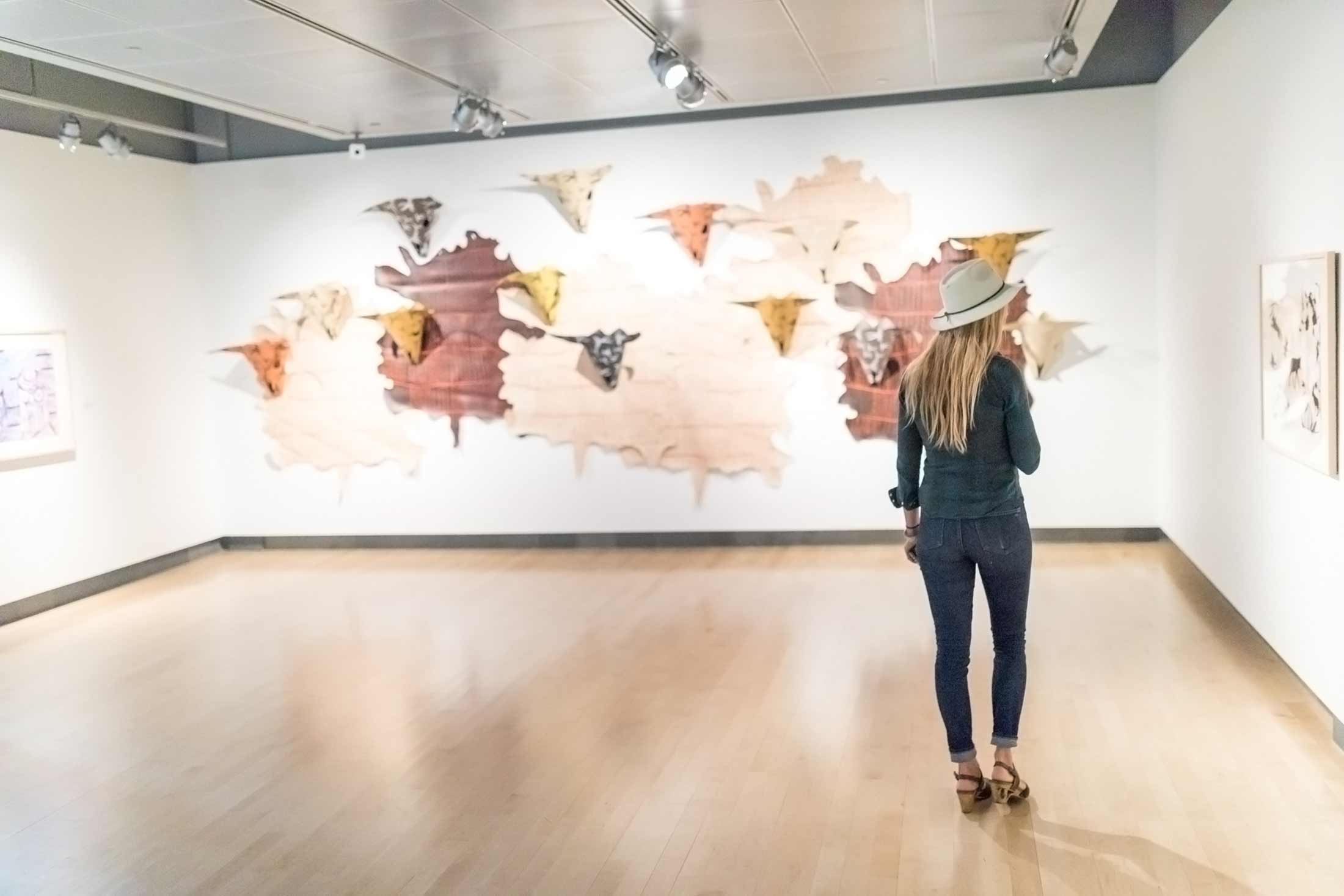
Explore and uncover at the Missoula Art Museum. Photo by Andy Austin
“Art does a lot of social good,” Brandon says. “Art is a bedrock if the community. It is one of those foundations of a democracy and how a society functions as a whole. It is not a separate activity, but it is one of those threads that forms a social fabric. When you see people come through and think about their town and interact with the space and experience art on the street, it is a powerful experience.”
If you're giving dry a try this month, Missoula has plenty of spots for mocktails. Check out some of our favorites
Follow Us